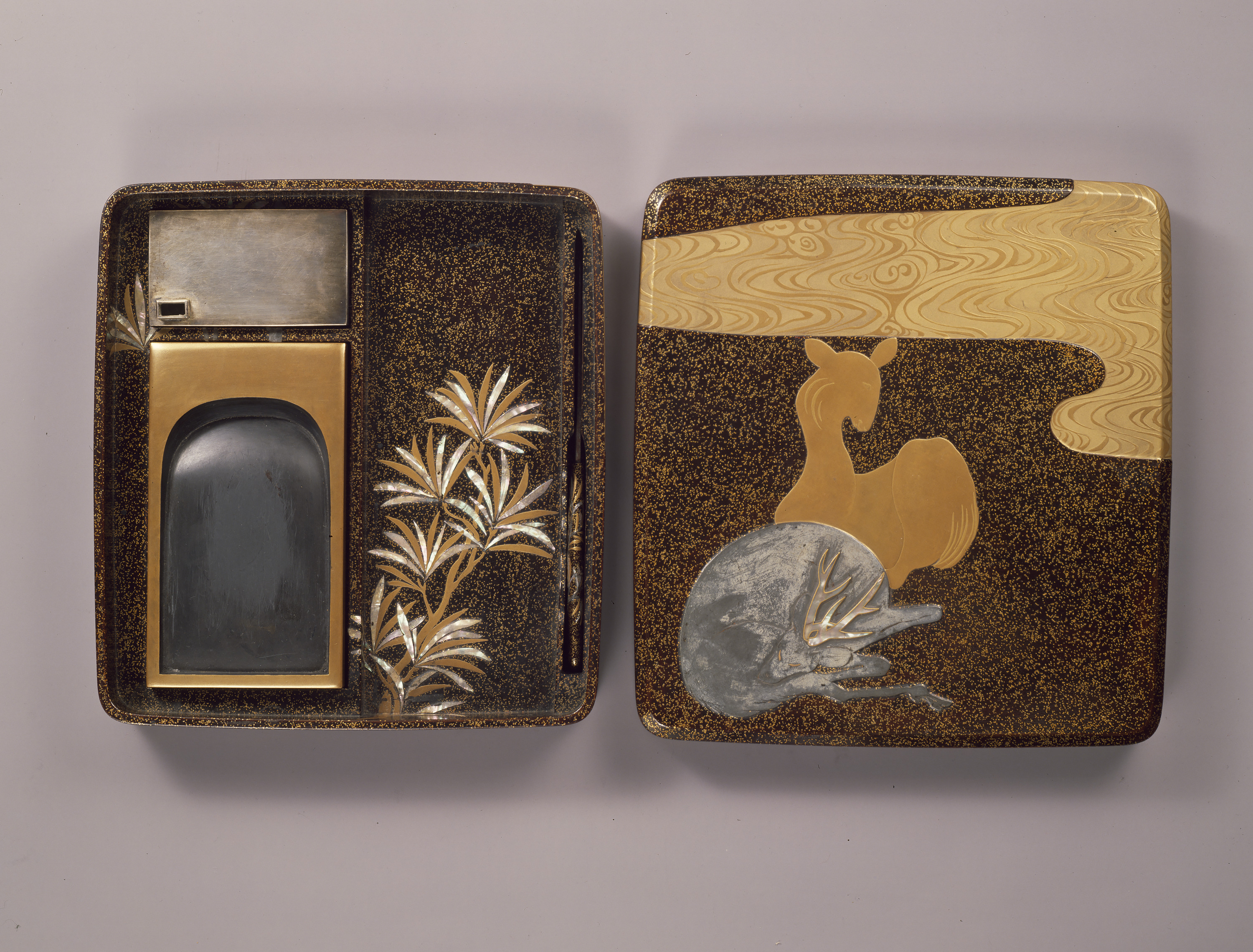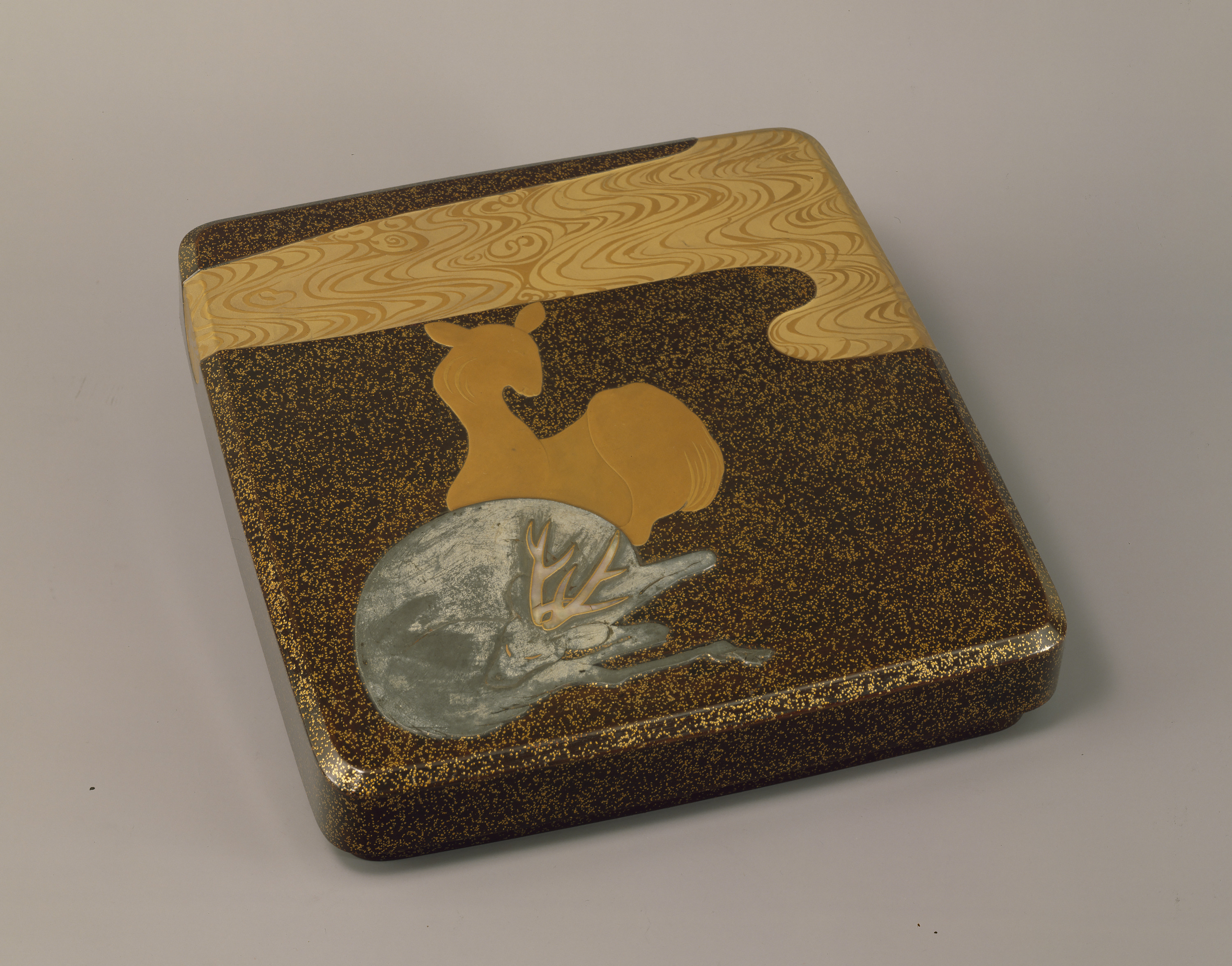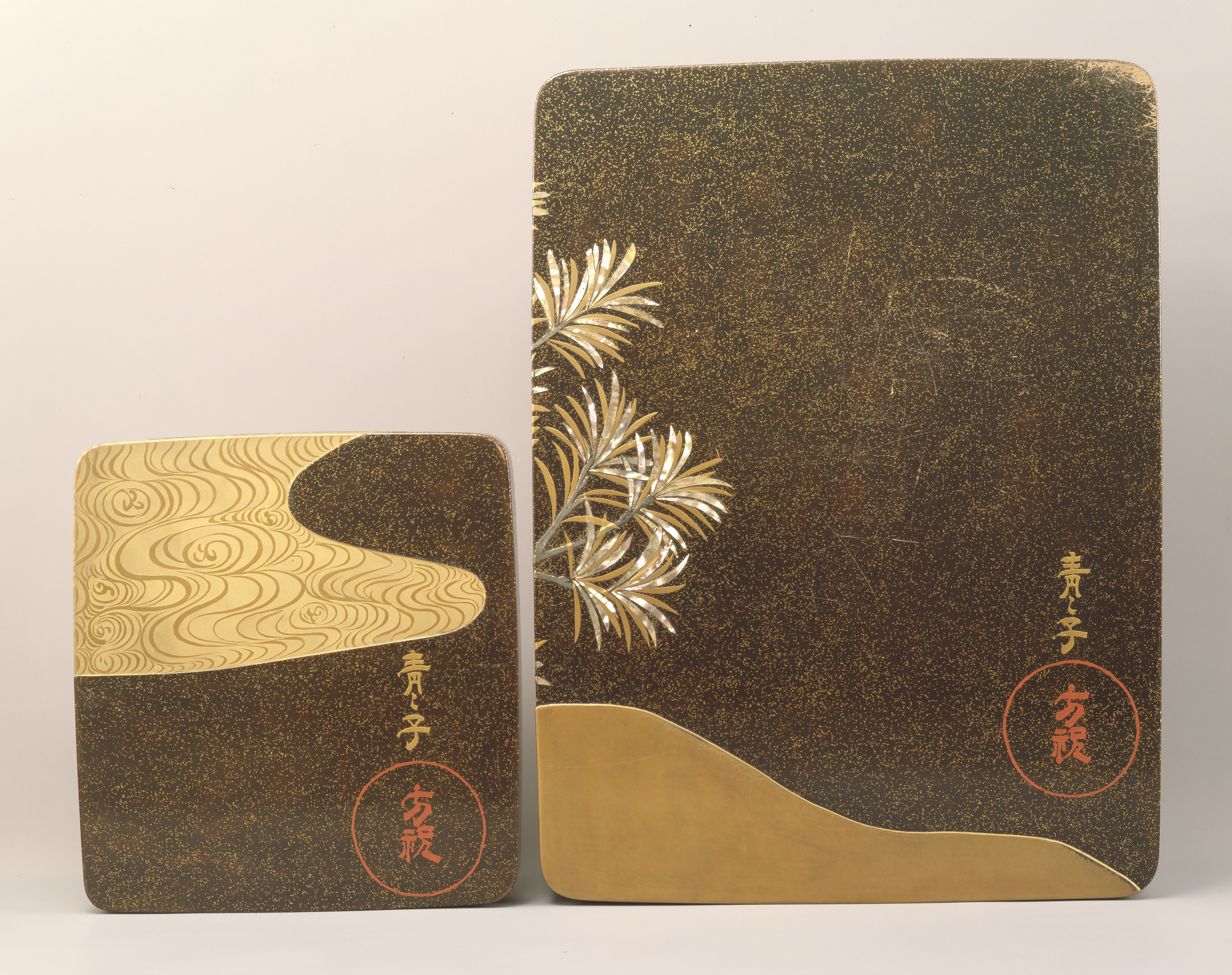- TOP
- Inkstone Case with Black Pines and Deer in Makie and Mother-of-Pearl Inlay
Overview
Inkstone Case with Black Pines and Deer in Makie and Mother-of-Pearl Inlay
- Museum No.
- HK53-2
Showing 1-6 of 3
| Title | Inkstone Case with Black Pines and Deer in Makie and Mother-of-Pearl Inlay |
|---|---|
| Designation | |
| Artist | Nagata Yuji |
| Category | Lacquerware(H) |
| Country | Japan |
| Period | Edo |
| Century | 18th |
| Year | |
| Quantity | |
| Materials | |
| Dimensions | Height 24.8cm Width 19.8cm Height 5.2cm |
| Inscription by | |
| Signature/Seals Etc | 底部に「青々子」銘、「方祝」印あり |
| Donor | Okumura Jubei |
Included Works
This object may be one within a set or the title of a set. To see all objects in the set, perform a Category Search by the Museum Number below, entering numerals only before the hyphen.



















Although it is believed that Nagata Yûji lived during the time of Seitoku (1711-1716) and Kyôhô (1716-1736), this has not yet been concretely established. Old books from the time say that he admired Ogata Kôrin (1658-1716) very much and mastered his styles and techniques. He chose the name, Seseishi (Disciple of Kôrin), as "Seisei" was another name for Kôrin. He belonged to the Rinpa School.
This inkstone case has a design of a male and a female deer at the waterside done in makie, plates of tin and lead, and mother-of-pearl inlay. The designs inside also employ the style of the Rinpa School. Although there are a number of works that bear the signature or seal of Yûji, there are very few large-scale works produced by him. For this reason, this inkstone can be counted as one of his masterpieces. Yûji was a unique artist who produced original works in the Edo period (1615-1868).
Japan-Edo